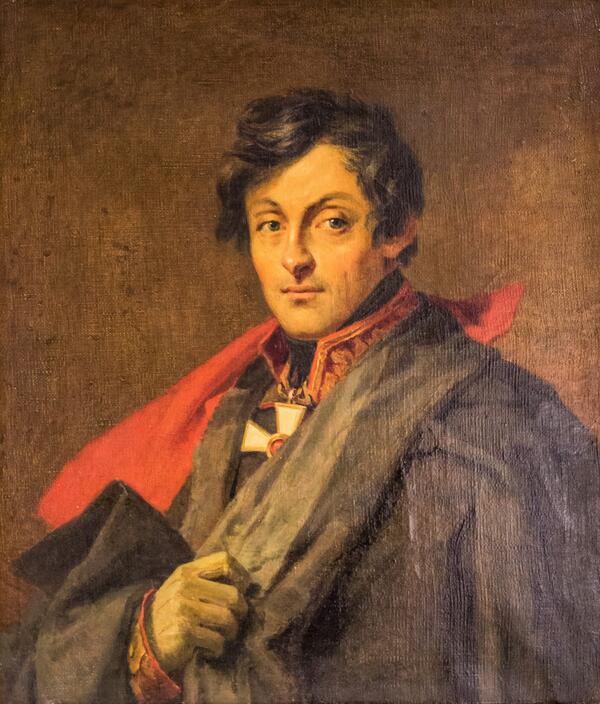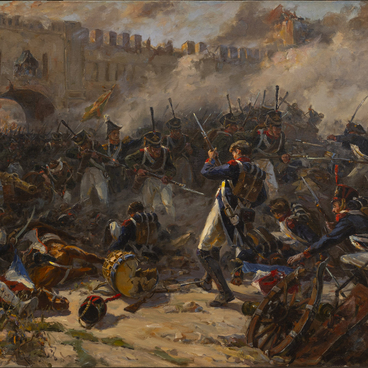Count Alexander Ivanovich Osterman-Tolstoy was the son of lieutenant general Count Ivan Matveyevich Tolstoy, the great-grandson of Vice-Chancellor Count Andrey Ivanovich Osterman. By decree of Catherine II in 1796, he inherited the coat of arms, the title and the Osterman estate with the right to be called Count Osterman-Tolstoy.
In 1774, Alexander Osterman-Tolstoy was enrolled in the Preobrazhensky Life Guards Regiment, and in 1788 he received the rank of ensign. He participated in the Russo-Turkish war and for his bravery during the Storming of Izmail, was presented with the Order of St. George, 4th class.
In 1793, Alexander Osterman-Tolstoy was appointed lieutenant colonel and assigned to the Bug Jaeger Corps. In 1796, he was promoted to colonel, and a little later to major general and became chief of the Shlisselburg Musketeer Regiment. A few years later, the count was promoted to lieutenant general.
In the campaign of 1806 against the French, he distinguished himself in the battles of Czarnowo, for which he received the Order of St. George, 3rd class, Pultusk, and Preussisch-Eylau. In 1812, he participated in the Battle of Vilkomir. On July 1, he was appointed commander of the Fourth Infantry Corps. He took part in the battles of Ostrovno and Valutino.
During the Battle of Borodino, Alexander Ivanovich Osterman-Tolstoy had a concussion. He received the Order of St. Alexander Nevsky. At the Council at Fili, he spoke in favor of leaving Moscow without a fight. He participated in the battles of Tarutino and Krasny. In December 1812 he left the army due to illness.
He returned to the ranks in 1813, but in the Battle of Bautzen was gravely wounded in the shoulder, and a little later, in the Battle of Kulm, a cannonball tore off his left arm. For distinction in battle, he was awarded the Order of St. George, 2nd class. In 1814, the count was promoted to adjutant general.
Alexander Ivanovich Osterman-Tolstoy was one of the generals whose portraits were painted by the English artist George Dawe in the 1820s. The artist depicted the commander in a general’s military uniform of the 1817 model and a greatcoat with the badge of the Order of St. George, 2nd class.
The composition skillfully masks the general’s injury. The artist hid Tolstoy’s missing left arm, torn off in the Battle of Kulm, with the folds of his overcoat. The static nature of the image indicates that Osterman-Tolstoy, who was abroad at the time, did not personally sit for the artist.
Perhaps, when working on the portrait, the artist used an engraving by Francesco Vendramini published in 1813 as a reference. The overall composition and position of the head are extremely similar to the portrait of Osterman-Tolstoy in civilian clothes by the French artist Pierre-Paul Prud’hon from the Hermitage collection. The reproduction displayed in the Borodino Museum-Reserve was made in 1956.


